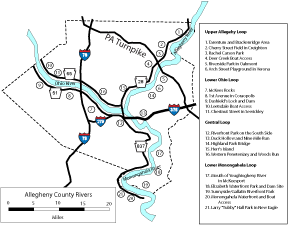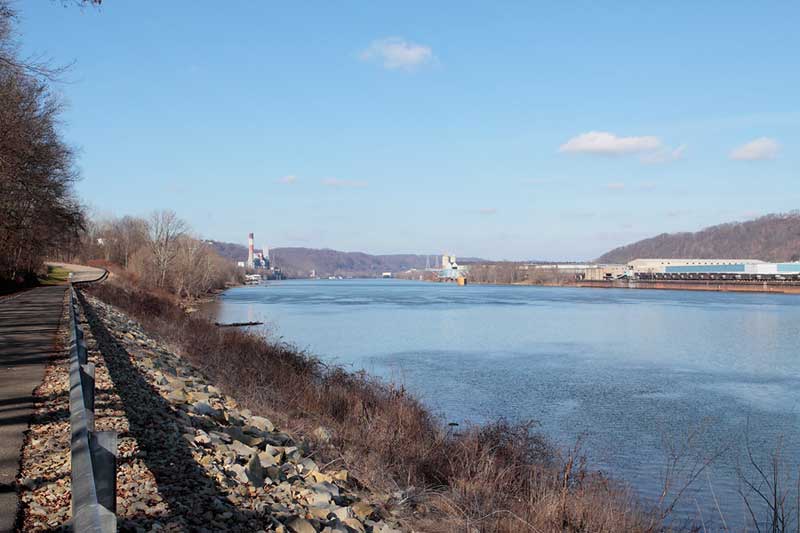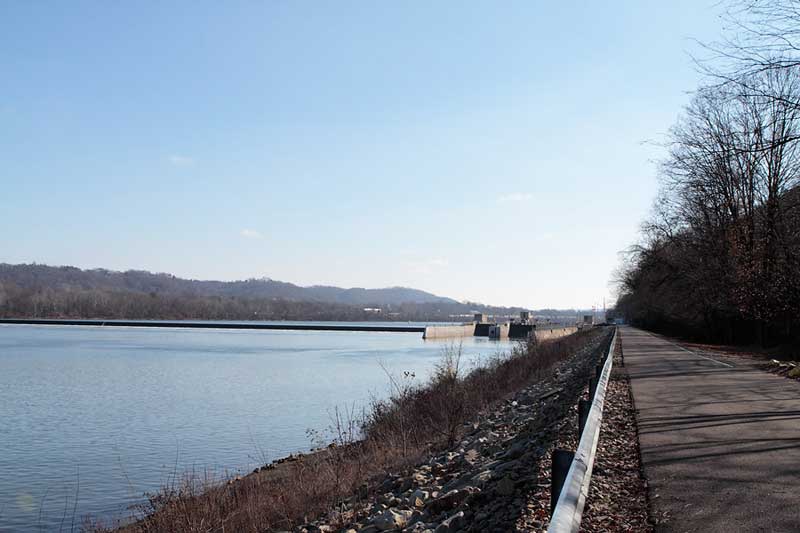
| Allegheny |
| DESCRIPTION: The famous rivers of Pittsburgh and Allegheny County offer rewarding birding. Near McKeesport the Youghiogheny flows into the Monongahela. The Ohio River begins at the confluence of the Allegheny and Monongahela at "the point" in Pittsburgh. In the last few years, I have become familiar with the lower Allegheny, the lower Monongahela, and Pennsylvania's portion of the Ohio. These large rivers do not concentrate waterfowl as do other western Pennsylvania waterways. For example, you can see hundreds of Ruddy Duck at Lake Arthur in November, but if you find 10 on the rivers you are doing better than average. Nevertheless, the list of waterbirds recorded each year on the rivers is comparable to the variety at the region's lakes, though an entire season would be necessary to see as many species as you could see in one day at the places mentioned above. Locally uncommon species reported on Allegheny County rivers in recent years include Bald Eagle, Osprey, Black-headed, Great Black-backed, and Lesser Black-backed gulls, Black-crowned Night-heron, Great Egret, Caspian and Forster's terns, American White Pelican, Long-tailed Duck, and all three scoters. A few birds are around during summer, but the birding season on the rivers really begins in late September when the first migrants arrive like Pied-billed Grebe and Ruddy Duck. By late-October, more waterfowl and gulls appear. Most of the gulls are Ring-billed with a smaller number of Herring and even fewer Bonaparte's. November is best for seeing loons, grebes, and the greatest variety of waterfowl and gulls. Tundra Swan migrate over Allegheny County during November, but the vast majority are flyovers and are not commonly seen on the water. Birding slows in the true winter months of January and February. A few stragglers remain along with late arrivals like Common Merganser and Common Goldeneye. Gull numbers vary from year to year. A few hundred gulls can usually be found each winter. Wintering Great Blue Heron perch in riverside trees. Birding improves in March when northbound waterfowl are in the peak of migration. April features the late waterfowl and gulls plus the chance for a tern or uncommon wading bird. Hundreds, or perhaps a few thousand Double-crested Cormorant have gathered on the rivers in spring. The first birds arrive in March. The number peaks in mid-April and then trickles off through May. Large, leafless trees and especially around the islands are where to look for these roosts, which are most reliable in the evening. A few cormorants remain during summer. By mid-May recreational boating increases, which makes observation more difficult. If you visit the rivers during the summer, try early in the morning. Canada Goose and Mallard are abundant and are the only waterfowl that breed here. Belted Kingfisher are usually easy to find, including in mild winters. Northern Rough-winged Swallow is another common breeder. Spotted Sandpiper are present through summer and may breed as well. Common land birds along the riverbanks include Warbling Vireo, Yellow Warbler, Gray Catbird, Baltimore Oriole, and Song Sparrow. Turkey Vulture are commonly seen from the river valleys. Common Nighthawk are common breeders in the rivertowns and are seen from all points along the rivers. Beginning around mid-August they can be seen in the hundreds as they gather during migration. Evenings, especially in the latter half of August can be exciting. Most of the nighthawks are gone by late September. The most unique breeding bird to our rivers is the Herring Gull. In 1994 Herring Gull nested on a navigational structure close to the Highland Park Bridge on the Allegheny River — the first confirmed breeding of any gull species in Pennsylvania. Herring Gull have nested each year at the bridge and the colony has grown to more than 25 birds. They travel some distance from the bridge daily, but a few can usually be found there anytime year round. Nesting Herring Gull have also been found at the Dashield's Lock and Dam on the Ohio River. |
DIRECTIONS: The sub sites divide the rivers into 4 driving loops; the central area around downtown Pittsburgh, the upper Allegheny, the lower Monongahela, and the lower Ohio. Bring a good map and explore, there are more sites to be found. Creek mouths, islands and boat launches are desirable when seeking places to look for birds. Community parks often have tame waterfowl year round. Less common birds are attracted to the activity of these birds and are tamer and closer than they usually are. During the winter when many of Pennsylvania's lakes and streams are frozen, the rivers remain open, especially at dams and water discharges. Getting a good view of the rivers can be difficult due to private property, a legacy of the region's industrial past. Efforts are being made to improve river access by some local groups. |


